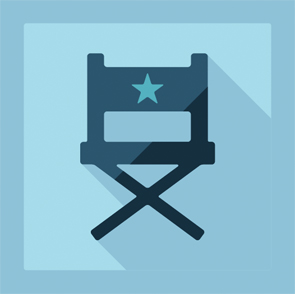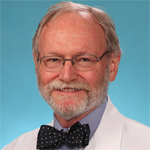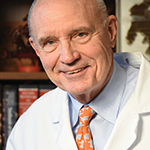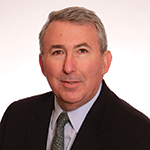
Olha Chernova/shutterstock.com
When I came to Washington University School of Medicine (WUSM) in St. Louis in 1996 to become fellowship program director, the previous program director had left, and the two fellows who had been selected both backed out (this was before the match). I was handed a stack of manila folders, which contained the previous documentation. From my involvement with the medicine residency program at Marshfield Clinic (1986–1996), I had learned a few things about the rules, but other than recognizing that I was required to notify the Residency Review Committee of the change in program director and reading the list of citations from the previous site visit, I knew nothing.
And a new site visit was coming.
I did not want to become the first WUSM Rheumatology Division to lose accreditation. What was I to do?
Although I don’t presume to be able to tell anyone how to be a program director, I can share with you a few things that I have learned that might be helpful in the process of becoming a program director, because it is an iterative process.
Find a Program Director Mentor
I had the good fortune of knowing Neal Roberts, who was a brand new intern at Duke when I was a hapless medical student on my first clinical rotation. (That was when I was hooked by rheumatology after seeing several great cases, but that’s another story.) Unlike the resident and other intern, Neal was a natural mentor and helped me enormously by teaching me how to become a clinician in training. He went on to fellowship at the Brigham, then faculty at Medical College of Virginia, where he ultimately became program director. So 20 years after we met at Duke, I called Neal for help.
I learned from Neal’s boss at the time, Shaun Ruddy, that Neal’s most recent site visit resulted in five years of accreditation with no citations—the program director equivalent of pitching a perfect game in baseball. So I knew I had found the right guy.
Neal was very generous with his time, and he gave me a loose-leaf notebook that he had prepared for the site visitor, with this advice: “Make it easy for the site visitor to find what he/she is looking for.” With his guidance and advice, I passed my first site visit—even though it was far from pitching a perfect game.
The Program Directors’ Conference
This event is your guide to success. I was fortunate that the inaugural Rheumatology Fellowship Program Directors’ Retreat (now the Program Directors’ Conference) occurred at exactly the right time for me. This has become an annual event supervised by the ACR’s Training and Workforce Committee.
Walter Barr—a program director rock star if there ever was one—took this program from its infancy to a playbook for becoming a great program director. I still have copies of his classic “25 Things I Wished I Had Known When I Became a Program Director.”1 Walter tragically died in the prime of his career, but those of us who had the great fortune of knowing him will never forget him.
Don’t Be Afraid of the Residency Review Committee
The annual Program Directors’ Conference gives you, as program director, a chance to meet one on one with a high-ranking representative of the the Residency Review Committee (sometimes even the top dog) to discuss any concerns you might have about your program being in compliance, especially the difference between “musts” and “shoulds” in the program requirements. And don’t take it as a personal failing when you get a citation; everyone gets them.
A previous head of the Residency Review Committee told me that it was interested in helping programs improve, rather than trying to shut them down. Maybe I’m naive, but that has been my experience. When you get a citation, you need to fix it. That usually makes your program better even though it might be a nuisance to deal with it.
Listen to Your Fellows
They will tell you what they want to learn. This is a paraphrase of Sir William Osler’s advice, “If you listen to the patient, they will tell you what is wrong with them.” In my first few years as program director, I was the only faculty member who would commit time to a weekly fellows’ conference.
I knew that I could not prepare 52 weekly presentations, so the theme was, “Well, what do you want to learn about today?” The answer to that question would be the basis of my extemporaneous presentation. (Occasionally, I would reply, “Sorry, I don’t know much about that. Please pick something else.”) One of the fellows referred to these presentations as our fireside chats—a nod to FDR’s radio addresses from 1933–1944 (for those of you who might be too young to recognize that phrase).
Two things brought improvement. The first: An MD/PhD fellow who became faculty started a weekly conference to teach the fellows basic immunology (which I could not do), assisted by the fellows who were themselves MD/PhD immunologists. Boy, was I proud of that. It remains one of our best conferences. The second: We received a Residency Review Committee citation because we did not have a weekly journal club or research conference. My division director responded by establishing a weekly conference that combined research-in-progress presentations by the faculty and journal club and state-of-the-art presentations by the fellows. It took over the fireside chats hour, which was itself folded into another conference.
You Can Learn a Lot from Your Fellows
They teach me something every day that I didn’t know. A long time ago, I got over thinking I had to know more than them about everything. Just last week, two of my fellows taught me about vasculitis associated with “hypomyopathic dermatomyositis” with the anti-MDA-5 antibody; I would not have been able to make that diagnosis myself.
Every Clinical Encounter Is a Teaching Moment
When I was a fellow in the early 1980s, the faculty preceptor would critique my presentation in a Socratic fashion, and we would discuss the case for 25 minutes. That was before relative value units (and the mobile phone and the personal computer). Now, whether the fellows are seeing my patients with me or I am precepting their patients, we just don’t have that kind of time. So with every encounter, I find one or more teaching points that take seconds, rather than minutes: “See this dorsal wrist tenosynovitis? That’s classic for RA.” Or “See how the thumb is tucked under the hand? That is first CMC osteoarthritis; we don’t need a radiograph.” It is random and free association, but we can pack a lot of nuggets into a clinic session or an inpatient visit, even when we don’t have time for a 20-minute chalk talk (during which I repeat what my teachers told me).
Each Fellowship Program (& Each Program Director) Is Unique
There is no pattern you have to follow. I have learned so much from my program director colleagues and have incorporated some of their ideas, but I have never felt that I had to copy what another program does. At the risk of sounding insipid, every program is special. Visit as many programs as you can; you will learn a lot.
My Fellows Are My Professional Children
Thanks to Maren Mahowald, another cherished mentor, for this phrase. I watch the fellows grow, develop and achieve their individual potential. One of the most satisfying things I do is help them figure out what they want and then help them make career choices. “What do you want?” is my favorite question—and often the hardest for them to answer. Often, as a result of such a discussion, a fellow has told me what they want, but they have not recognized that yet, so I can reflect back to them what they have just told me to help them understand. Without question, my greatest joy as a program director is to watch these young people prosper and succeed. Sometimes, I tell people I’m a farmer. I grow rheumatologists.
Honored by the ACR
At the 2015 ACR/ARHP Annual Meeting, I was incredibly honored to be a co-recipient of the Distinguished Fellowship Program Director Award. I can think of many other program directors I would have chosen before me to receive this award, but I have come to accept that it was my turn this time. I offer what I have learned, in the hope that a new program director may be able to take away something to help on their journey of becoming a rheumatology fellowship program director.
 Rick Brasington, MD, is a rheumatologist and fellowship program director at Washington University in St. Louis, as well as an associate editor of The Rheumatologist.
Rick Brasington, MD, is a rheumatologist and fellowship program director at Washington University in St. Louis, as well as an associate editor of The Rheumatologist.
Reference
- Barr W. 25 things I wished I had known when I became a program director. Unpublished manuscript.


